Tanzania National Park
Tarangire National Park
Serengeti National Park spans endless savannahs, dotted with acacia trees and dramatic rock formations. Witness lions, elephants, giraffes, and zebras in their natural habitat, guided by expert safari professionals. Moreover, the park’s diverse ecosystems make every visit unique, offering breathtaking sunrise views and unforgettable encounters with Africa’s most celebrated wildlife.
The Best Time to Visit Serengeti National Park
Authentic Serengeti safari
A vast grassland, dotted with spreading acacias and rocky outcrops, forms the backdrop for endless wildlife encounters. Indeed, thousands of wildebeest, zebra, and other plains game stretch as far as the eye can see. Meanwhile, predators stalk their prey across the open plains, singling out the young, the weak, and the slow. Together, these elements ensure that the Serengeti delivers a quintessentially African safari experience.
GEOGRAPHIC SIZE
14,750 km²
MAMMAL SPECIES
350+
BEST TIME TO VISIT
All year round
Yes (since 1981)
MOST FAMOUS FOR
The Great Wildebeest Migration
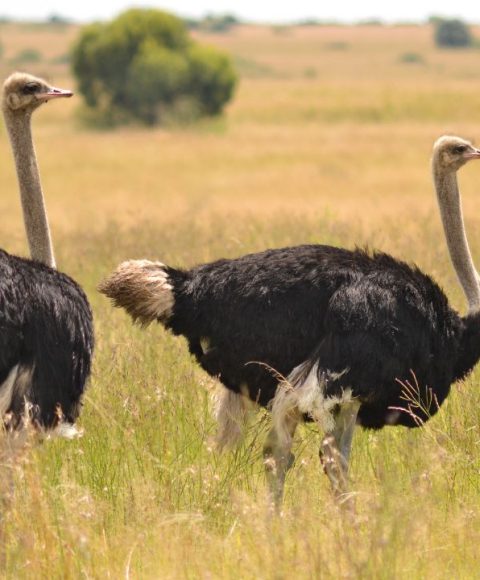
Grassland Plains
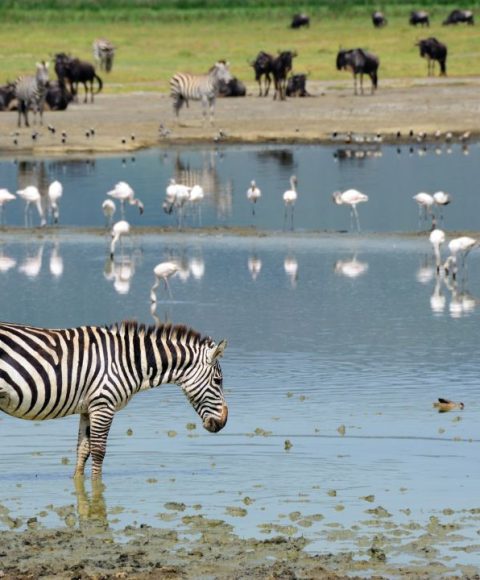
Riverine Forests
Lush, tree-lined riverbanks supporting elephants, hippos, birds, and monkeys near the Grumeti and Mara rivers.
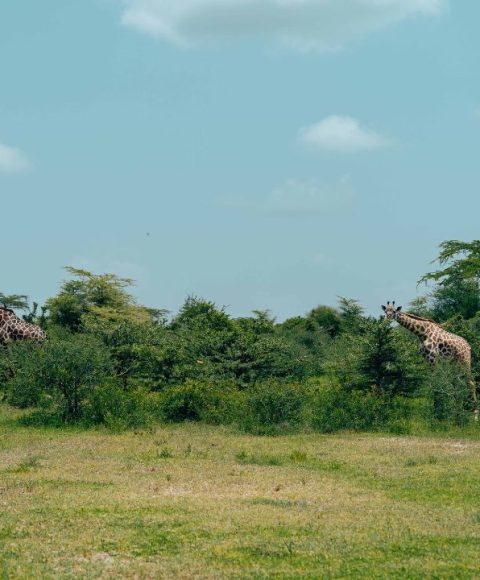
Woodlands
Acacia and combretum woodlands provide shelter for giraffes, elephants, leopards, and a variety of birds.
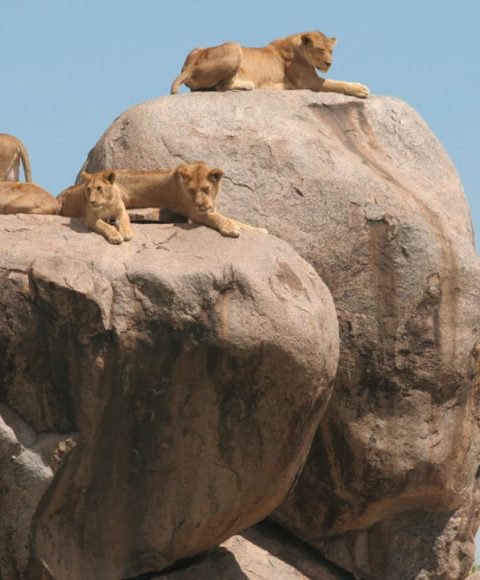
Kopjes (Rocky Outcrops)
Granite rock formations offering refuge for lions, hyraxes, and reptiles, often used as lookout points by predators.
Wildlife & Birds
Serengeti National Park is home to one of the richest concentrations of wildlife in the world. From massive herds of wildebeests and zebras to stealthy predators like lions, leopards, and cheetahs, the park consistently offers unforgettable encounters. Additionally, visitors can spot elephants roaming the plains, giraffes browsing treetops, and crocodiles lurking in rivers—making every game drive a thrilling experience.
Moreover, the Serengeti supports over 500 species of birds, including ostriches, vultures, eagles, and colorful bee-eaters. Meanwhile, smaller animals such as hyraxes, mongoose, jackals, and servals also thrive here. Whether you’re a first-time visitor or a seasoned wildlife enthusiast, the Serengeti promises awe-inspiring sightings and a deep connection with nature.
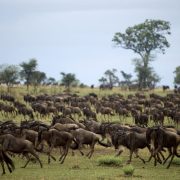
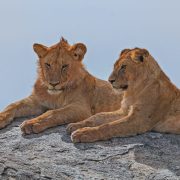
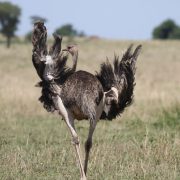
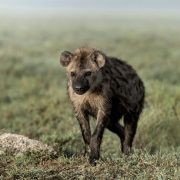
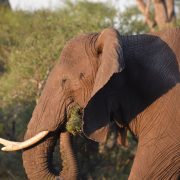
Serengeti Weather
DRY SEASON
June to October & Mid-December to February
WET SEASON
March to May & November to early December
Serengeti National Park Map
Serengeti National Parks FAQ's
General Serengeti Information
1. Where is Serengeti National Park located?
Serengeti National Park is located in northern Tanzania, within the Mara and Simiyu regions, and shares its northern border with Kenya’s Maasai Mara National Reserve. As part of the greater Serengeti ecosystem, it is one of East Africa’s most celebrated safari destinations, accessible from Arusha, Kilimanjaro International Airport, and other popular tourism hubs.
2. How large is Serengeti National Park?
Covering approximately 14,750 square kilometers, Serengeti National Park is one of Africa’s largest and most iconic wildlife conservation areas. Its vast plains, woodlands, and river systems provide habitats for thousands of animal species, making it ideal for big game safaris, nature photography, and birdwatching.
3. What is Serengeti National Park famous for?
The Serengeti is best known for the Great Wildebeest Migration, where over 1.5 million wildebeests and hundreds of thousands of zebras and gazelles cross the plains in search of greener pastures. Additionally, it is renowned for its dense predator population, including lions, cheetahs, leopards, and hyenas, making it one of the top safari destinations for witnessing dramatic wildlife encounters.
4. What wildlife can I expect to see in Serengeti?
Serengeti National Park is home to a remarkable range of wildlife, including the Big Five—lions, leopards, elephants, buffaloes, and rhinos—alongside cheetahs, giraffes, hippos, crocodiles, and more. Furthermore, over 350 mammal species and 500+ bird species make the park a paradise for nature lovers and photographers alike.
5. Is Serengeti National Park safe for tourists?
Yes, Serengeti is considered a very safe destination for tourists. By traveling with a licensed tour operator, visitors benefit from professional guidance and strict adherence to park regulations. Wildlife is wild and should always be respected, but your guide ensures safety by following designated routes and established protocols.
6. When is the best time to visit Serengeti?
Serengeti can be visited year-round, depending on what you want to experience. During the dry season (June to October), game viewing is ideal as animals gather near water sources, while the wet season (March to May) brings lush green landscapes and migratory birds. Moreover, the migration’s calving season occurs from January to March in the southern plains.
7. What types of safaris are available in Serengeti?
Visitors can enjoy a variety of safari experiences, including morning and evening game drives, hot air balloon safaris, walking safaris in designated areas, photographic safaris, and cultural tours to nearby Maasai communities. Each option offers a unique way to explore the Serengeti’s rich landscapes and wildlife.
8. How do I get to Serengeti National Park?
Travelers can reach Serengeti by domestic flights to airstrips such as Seronera, Kogatende, and Grumeti from Arusha, Zanzibar, or Kilimanjaro Airport. Alternatively, overland journeys take 7–8 hours from Arusha and can be paired with visits to Ngorongoro Crater or Lake Manyara along the way.
9. What should I pack for a Serengeti safari?
Pack light, breathable clothing in neutral colors, a wide-brim hat, sunglasses, sunscreen, insect repellent, a reusable water bottle, and a good camera with extra batteries. Additionally, binoculars are highly recommended for game viewing, and a small medical kit is useful for personal needs.
10. Are there luxury accommodations in Serengeti?
Yes, Serengeti offers a wide range of accommodations, ranging from luxury lodges and tented camps to mobile camps that move with the migration. Options such as Four Seasons Serengeti, Singita, Asilia, Lemala, and Serengeti Serena Safari Lodge provide comfort, exclusivity, and excellent access to wildlife.
The Great Wildebeest Migration
1. What is the Great Wildebeest Migration?
The Great Wildebeest Migration is one of the most extraordinary natural events in the world. During this annual journey, over 1.5 million wildebeests, accompanied by zebras, gazelles, and other herbivores, move in a circular route through the Serengeti-Mara ecosystem in search of water and fresh grazing. Driven by rainfall patterns and predator-prey dynamics, it’s a must-see highlight on any Tanzania safari.
2. When does the migration happen in Serengeti?
The migration occurs year-round, with different stages visible across the Serengeti depending on the season. Key phases include the calving season from January to March in the southern plains, Grumeti River crossings around June–July in the western corridor, and the dramatic Mara River crossings between August and October in the northern Serengeti.
3. Where are the best places to view the migration?
Each migration phase takes place in a specific Serengeti region:
- Southern Plains (Ndutu) – Jan to Mar (calving season)
- Western Corridor (Grumeti) – Apr to Jul
- Northern Serengeti (Kogatende & Lamai) – Aug to Oct (Mara River crossings)
- Central Serengeti (Seronera) – Nov to Dec
By choosing the right location, you can witness the migration at its most dramatic and photogenic moments.
4. What makes the Mara River crossing so famous?
The Mara River crossing is the most iconic part of the Great Migration. Here, herds must navigate fast-flowing waters, crocodile-infested rivers, and steep embankments. As a result, it’s a heart-pounding spectacle and a top highlight for wildlife photographers and safari enthusiasts alike.
5. Do predators follow the migration?
Yes, predators such as lions, cheetahs, hyenas, leopards, and crocodiles closely track the herds. Consequently, the Serengeti becomes a living theater of predator-prey dynamics, offering thrilling wildlife encounters that are unique to this ecosystem.
6. Is it possible to follow the migration throughout the year?
Absolutely. Many tour operators provide mobile camps and itineraries that track the herds across regions. By planning carefully, you can witness different stages of the migration at almost any time of the year.
7. Can I see the migration from a hot air balloon?
Yes, hot air balloon safaris over the Central and Northern Serengeti offer breathtaking aerial views of the herds. Floating above the plains at sunrise, you’ll experience a magical perspective of this iconic wildlife phenomenon.
8. What kind of accommodations are available during the migration?
There are mobile migration camps, luxury lodges, and seasonal tented camps positioned near key migration zones. Top options include &Beyond Serengeti Under Canvas, Lemala Kuria Hills, and Nomad Lamai Serengeti, all designed for an immersive and comfortable safari experience.
9. Is the migration suitable for family safaris?
Yes, the Great Migration is safe and fascinating for families. Many lodges and operators offer family-friendly safaris with educational wildlife activities and child-focused experiences. However, some age restrictions may apply for balloon or walking safaris.
10. Why is the Great Migration important for conservation and tourism?
The migration is a symbol of ecological balance, demonstrating the importance of habitat connectivity, predator-prey relationships, and natural resilience. Moreover, it drives eco-tourism, supports local communities, conservation initiatives, and promotes sustainable travel in Tanzania.
More Facts
- The Great Migration: One of the most spectacular wildlife events in the world, the Great Migration sees millions of wildebeests, zebras, and gazelles moving across the Serengeti and into Kenya’s Masai Mara in search of fresh grazing grounds. Along the way, they are accompanied by predators like lions, crocodiles, and hyenas.
- Diverse Wildlife: Serengeti is home to the "Big Five" (lion, leopard, elephant, buffalo, and rhinoceros), along with cheetahs, giraffes, hippos, crocodiles, and hundreds of bird species. Its ecosystems, from savannahs to riverine forests, host a wide array of creatures year-round.
- Endless Plains: Serengeti’s name means “endless plains” in the Maasai language, perfectly capturing its vast, sweeping landscapes that stretch as far as the eye can see. The park features rolling hills, rocky outcrops (kopjes), and the Seronera River that supports a rich mix of wildlife.
- Hot Air Balloon Safaris: For a truly unique perspective, visitors can take to the skies in a hot air balloon, offering panoramic views of the Serengeti at sunrise. The flight provides a bird’s-eye view of the wildlife and the expansive landscape below.
- Cultural Encounters: Travelers can experience Maasai culture through visits to Maasai villages, gaining insight into their traditions, lifestyle, and customs that have remained unchanged for centuries.
Our Trip Advisor Testimonials
Verified A Well-Curated 5-Day FAM Trip with Africa Wild Whispers! As a travel agent constantly looking for authentic, reliable partners in Tanzania, I had the pleasure of joining a 5-day familiarization trip with Africa Wild Whispers, and I must say — I was thoroughly impressed.From the very start, the team was incredibly organized, professional, and welcoming. We explored key destinations including Tarangire National Park, Ngorongoro Crater, and surrounding cultural sites — and each experience was executed with the care and precision you'd expect from a seasoned operator.The accommodations selected for our inspection were thoughtfully chosen, offering a great range from mid-range comfort lodges to high-end boutique options — all clean, charming, and well-situated. Site visits were efficiently scheduled, giving us ample time to assess the quality of service, rooms, and ambiance. The staff at each lodge were well-briefed on our visit and open to discussing potential collaboration.What stood out most was the attention to detail by the Africa Wild Whispers team. Our guide was not only knowledgeable about the parks and wildlife, but also understood what we, as agents, needed — from rate sheets to operational insights. They clearly care about building long-term, trust-based partnerships.Additionally, their commitment to local community engagement and sustainable tourism really resonated with me and added a deeper value to the experience.This FAM trip proved that Africa Wild Whispers is more than ready to deliver outstanding experiences for clients — both in terms of service quality and authentic Tanzanian adventure.I look forward to building a strong working relationship and confidently recommending them to my clients.Verified 8 Days Lemosho Route I am Happy I chose Africa Wild Whispers I was nervous Climbing Kilimanjaro, I am not really the most fittest guy there is so when I decided to Climb Kilimanjaro I stayed online looking for information on preparation and other stuff luckily I met Africa Wild Whispers and we started talking for months I asked various questions and they always responded with Very good information, The time came and I decided to visit I was picked up at the airport and Haji and Ed the two owners of this company were very welcoming we had a briefing and gear Check our guide Antipas made sure I had everything and I rested at Moshi for the night....Early in the morning our journey began and we started the trek the guides and Porters were super helpful and friendly they sang to us at nearly every camp, Other Trekkers I met in my group were amazing as well and I made some friends through this experience, The food at Moshi and on the mountain was delicious and satisfying I could see groups from other companies with less than what we had, This company is nice and I would recommend it for any adventure you are true Super heroesVerified Great Birthday Celebration in the Wild I give this company 5 Stars, Me and my husband Planned a very last minute trip we approached many Companies but We loved what Africa Wild Whispers proposed, we enjoyed everything, The safari was nice, The food was tasty, Our Zanzibar excursions were well Planned and ofcourse the people were all friendly and caring, I had a very good Time and I guess as far as my birthday celebrations go this was thr best birthday ever🤩🎂🥂Verified Wonderful Experience from the Beginning to the very Last Moment We were picked up from KIA, the airport near Arusha the moment we landed we were not rushed into our Safari vehicle but enjoyed some refreshments while unwinding after the long Flight we had. Our guide was friendly and informative, .We then started our journey to Tarangire since we chose not to stay in Arusha on the first Day, Tarangire National Park was okay but not a lot of big games, the next day we went to Serengeti the journey was super tiresome but thrilling, On the way we saw a lot from small prey to Large predators, We even saw a Leopard and it was superb, We stayed at a very Beautiful And elegant Camp we really enjoyed everything here, the next day we went for a Balloon Safari this was the highlight of the full trip it was worthy it, I was afraid of the Balloon at first but once you are airborne all the fear washes away, We had a great Game Drive in the Serengeti and we saw a Lot, after two whold days in Serengeti we we then taken to Ngorongoro Crater another amazing Place Africa 🌍 is truly magnificent, Then we met the Hadza people there Language was strange, there habits too it's like a thing of the movies we were taught about these individuals though I would love to learn more, Then we went back to Arusha, Our town trip in Arusha was another highlight we went to Cheka Hotspring and Serval Wildlife and guess what we were accompanied by the company owners who asked us a lot about the experience and asked about what the should change to make the experience truly Unique we told them to change Nothing it was perfect the way it was, Our trip then was over by a drop off to KIA were we said our goodbyes...On my next trip to Kilimanjaro I will use this agency againVerified I would recommend and use it again for my future Our Journey with Africa Wild Whispers was a wonderful Experience we can not begin to imagine a better outcome, We were picked up at Kilimanjaro airport by our Driver Guide, Paul, He was wonderful, we had a brief orientation while enjoying a fresh coffee and some bites then our journey to Arusha began where we had a great good nights rest. In the morning we began our Journey to Tarangire where we saw plenty of Animals but in the Serengeti is where we were much amazed, Our guide tried his very best to explain everything we saw, from Animals to Plants and Birds, We had a blast in Serengeti to say the least after Serengeti we had a opportunity to visit the Ngorongoro where we had an opportunity to see a Rhino, very far away but we saw it :), After Ngorongoro we went back to Arusha, We really wish we had more time for the nature and game drives. In Arusha the owners of the company met us and asked about our trip we really appreciated the gesture we shared a celebratory Drink and Dinner then we where taken to Kilimanjaro International Airport. We recommend Africa Wild Whispers they are simply the Best...
